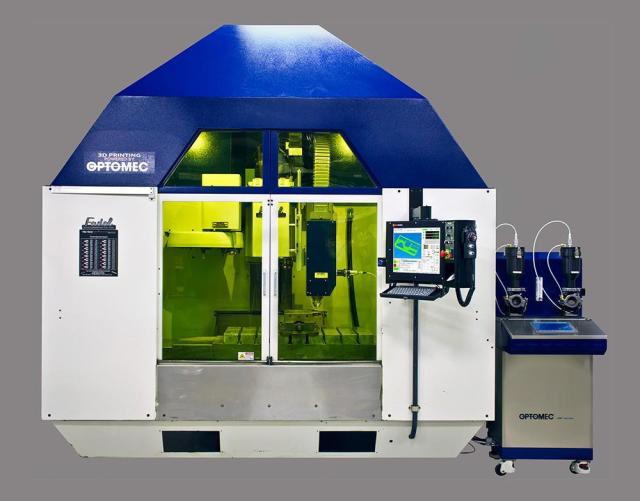
At the International Manufacturing Technology Show (IMTS) 2016, it was clear that 3D printing was no longer a tool for prototyping, but something capable of aiding in the manufacturing process—whether it be the 3D printing of tooling or end products themselves.
All of the established industry leaders sought to demonstrate the technology’s capabilities in the larger manufacturing space, including Optomec, which made an important announcement that could see the price of metal additive manufacturing (AM) drop and, therefore, have its reach extend into the production supply chain.
Optomec unveiled a partnership with Fryer Machine Systems to integrate Optomec’s existing laser engineered net shaping (LENS) metal 3D printing process into Fryer’s computer numerical controlled (CNC) machines to create systems at a lower cost. To learn more about the impact of the partners’ new machines, ENGINEERING.com spoke with Ken Vartanian, vice president of Marketing, for Optomec.
3D Printing Metals and Electronics
Based out of Albuquerque, N. Mex., Optomec is a pioneer in both the fields of directed energy deposition (DED) and electronics 3D printing. After the invention of the LENS DED process at Sandia National Laboratories, Optomec began commercializing the technology in 1997 before also commercializing its Aerosol Jet electronics 3D printing in 2003.
The LENS process directs metal powder into a melt pool formed by a laser beam. Working with such metals as titanium, stainless steel and Inconel, LENS can be implemented to repair existing metal parts or as a method of manufacturing parts.
Aerosol Jet involves the atomization of a given electronic ink into a fine mist, which is then sprayed through a very fine nozzle by a focusing gas. Aerosol Jet technology is capable of extremely high resolution printing, which was demonstrated recently as Optomec achieved micron-scale printing. Additionally, Aerosol Jet can use a wide array of materials, from organic substances to adhesives to conductive inks.
Optomec has become an established leader in both metal 3D printing and electronics 3D printing, expanding its LENS and Aerosol Jet systems, steadily increasing the capabilities of its technology. The Aerosol Jet machines have gone from three to five axes of control so that conductive inks can be sprayed onto complex surfaces as the substrate is rotated beneath the deposition head. The LENS machines have become both more reliable through the integration of quality control software and sensors as well as more capable, as five-axis motion has allowed for the repair of metal parts. As a result of Optomec’s technology, the company received a $6 million strategic investment from GE Ventures and Autodesk in December 2015.
Read more at ENGINEERING.com

